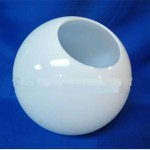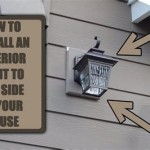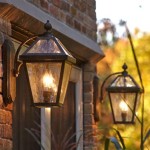Metal Halide vs. LED Outdoor Lighting: A Comprehensive Guide
Outdoor lighting plays a crucial role in enhancing safety, security, and aesthetics. Two popular lighting technologies for outdoor applications are metal halide (MH) and light-emitting diodes (LED). Each technology has its unique advantages and drawbacks. This guide will delve into the essential aspects of metal halide vs. LED outdoor lighting to help you make an informed decision for your specific needs.
1. Energy Efficiency
LEDs are significantly more energy-efficient than MH lamps. They consume less wattage while producing the same or even higher levels of illumination. LEDs typically use 50-80% less energy than MH lamps, resulting in substantial energy savings over time.
2. Lifespan
LEDs have an exceptionally long lifespan compared to MH lamps. The average lifespan of an LED is 50,000 to 100,000 hours, while MH lamps typically last 6,000 to 15,000 hours. This longevity reduces the need for frequent lamp replacements, saving on maintenance costs.
3. Light Quality
MH lamps produce a high-intensity, bluish-white light that can provide good color rendering. However, LEDs offer a more natural, warm white light that is less harmful to the eyes. LEDs also have the ability to produce a wider range of colors and color temperatures, providing greater flexibility for creating desired lighting effects.
4. Warm-Up Time
MH lamps require a warm-up time before reaching their full brightness. This warm-up period can be several minutes, which can be a disadvantage for applications where instant illumination is necessary. LEDs, on the other hand, turn on instantly, eliminating any delay in providing light.
5. Maintenance
LEDs require minimal maintenance compared to MH lamps. They do not require regular lamp replacements or cleaning, as they have no filaments that can burn out or degrade. This low maintenance requirement can significantly reduce operating costs over the long term.
6. Cost
LEDs have a higher upfront cost than MH lamps. However, the lower energy consumption and longer lifespan of LEDs result in significant savings over the lifetime of the fixture. The total cost of ownership for LED outdoor lighting can be significantly lower than that of MH lighting in the long run.
7. Environmental Impact
LEDs are more environmentally friendly than MH lamps. They contain no mercury or other hazardous materials, and they consume less energy. The reduced energy consumption also contributes to a lower carbon footprint.
Conclusion
Both metal halide and LED outdoor lighting have their advantages and disadvantages. When selecting the most suitable option, it is essential to consider factors such as energy efficiency, lifespan, light quality, warm-up time, maintenance, cost, and environmental impact. By carefully weighing these factors, you can determine the best lighting technology to meet your specific needs and provide optimal illumination for your outdoor space.

Led Outdoor Lighting Vs Metal Halide Eco Story

Is Metal Halide Better Than Led Grnled

Led Vs Metal Halide Lighting Fireflier Limited

Lighting Comparison Led Vs Metal Halide Lights

Led Vs Metal Halide Lamps Which Lighting Option Saves You Money In Th

A Metal Halide Vs Led Comparison Action Services Group

Premier Lighting Case Study Outdoor Metal Halide Retrofit To Led

How Much Power Of Led Light Can Replace A 1000 Watt Metal Halide Fireflier Lighting Limited

Why Are Led Stadium Lights Better Than Metal Halide Lamp

Metal Halide Vs Led Ledlightingsupply Com







